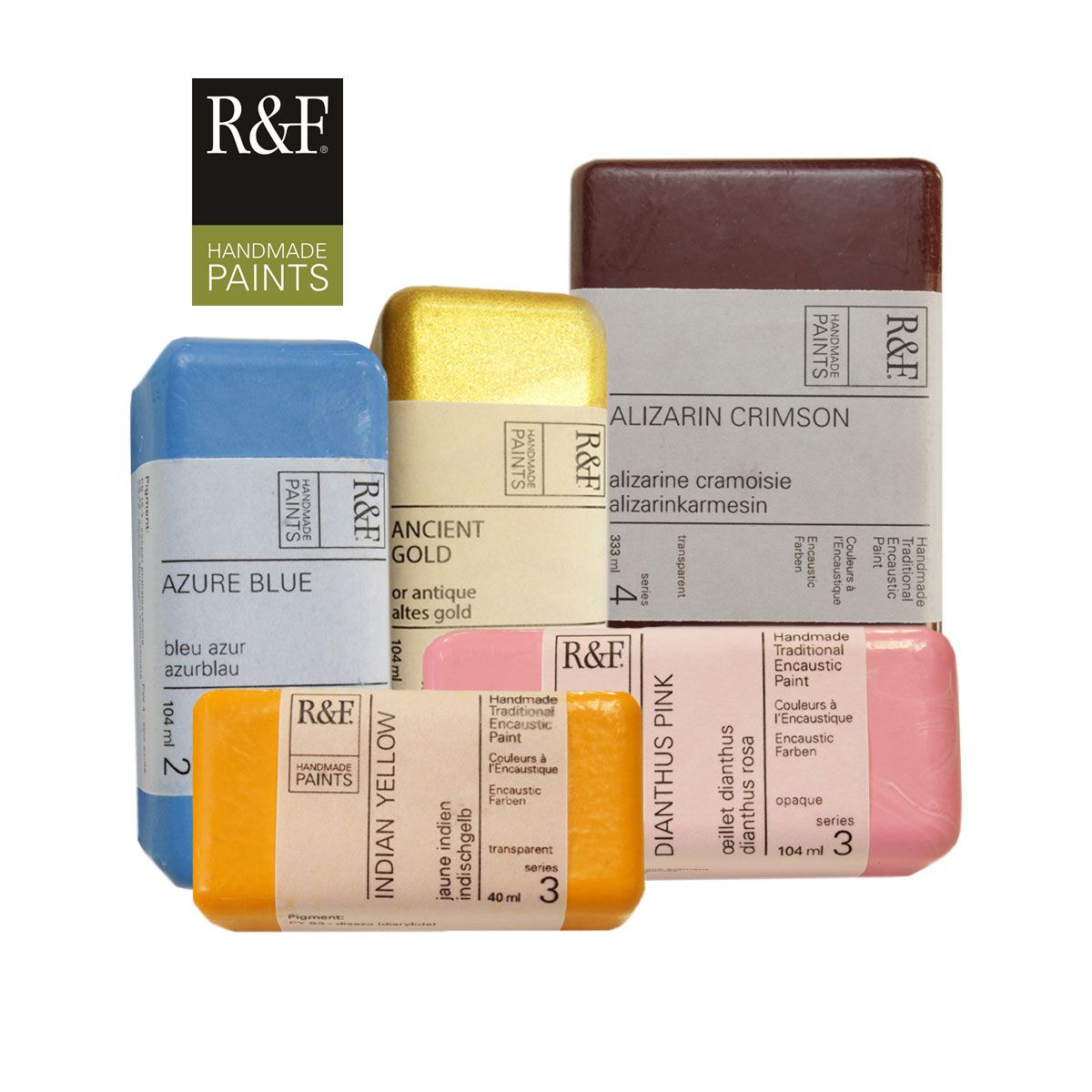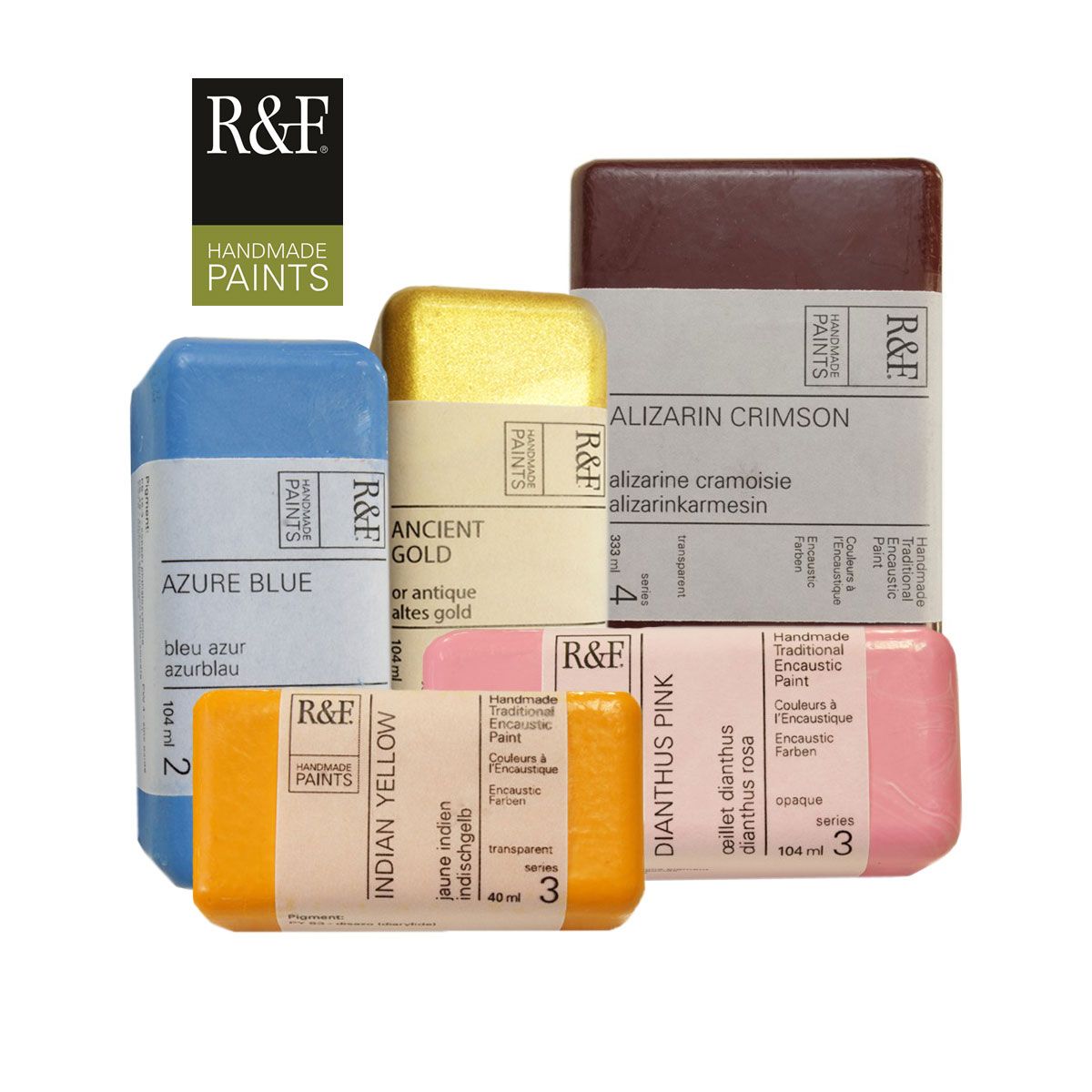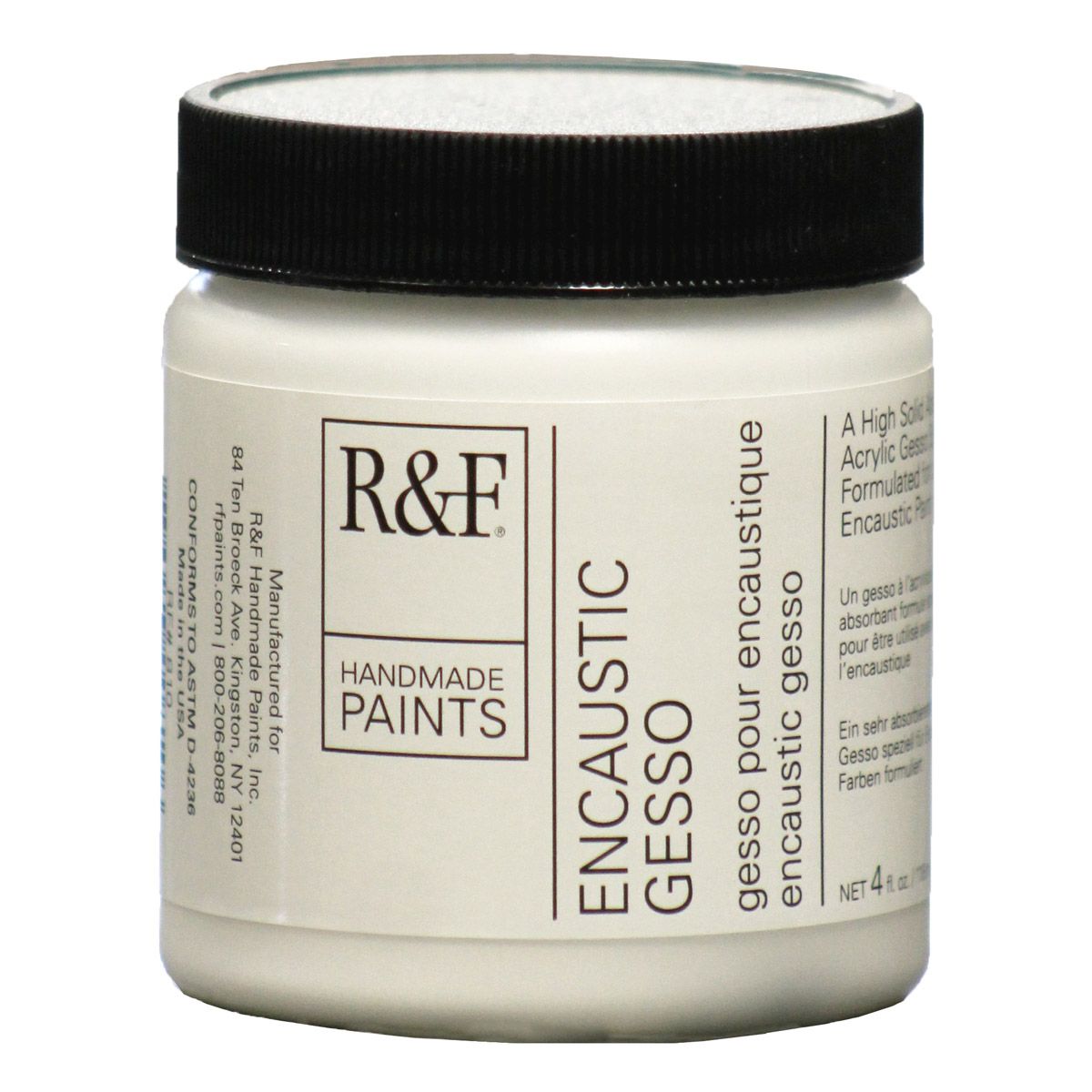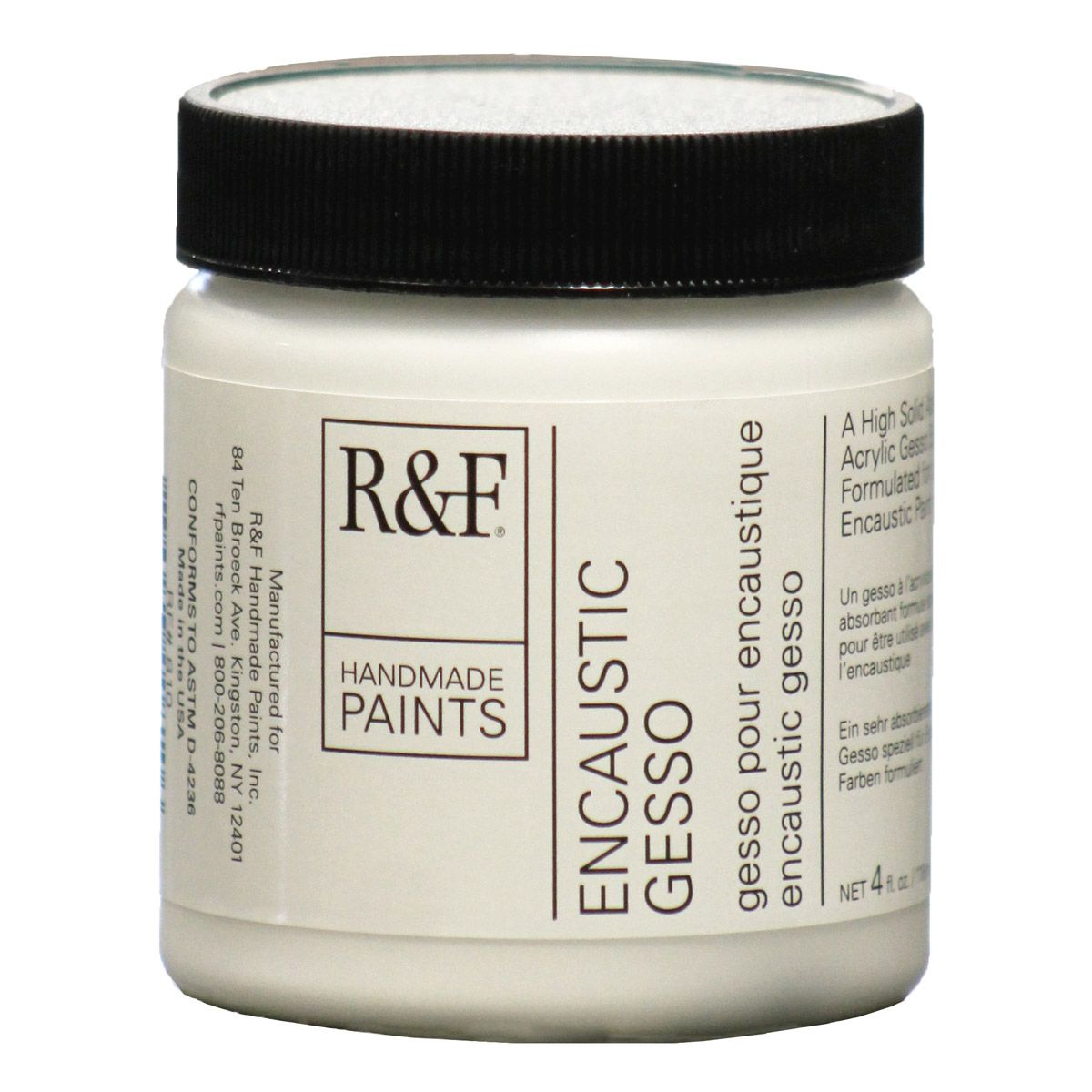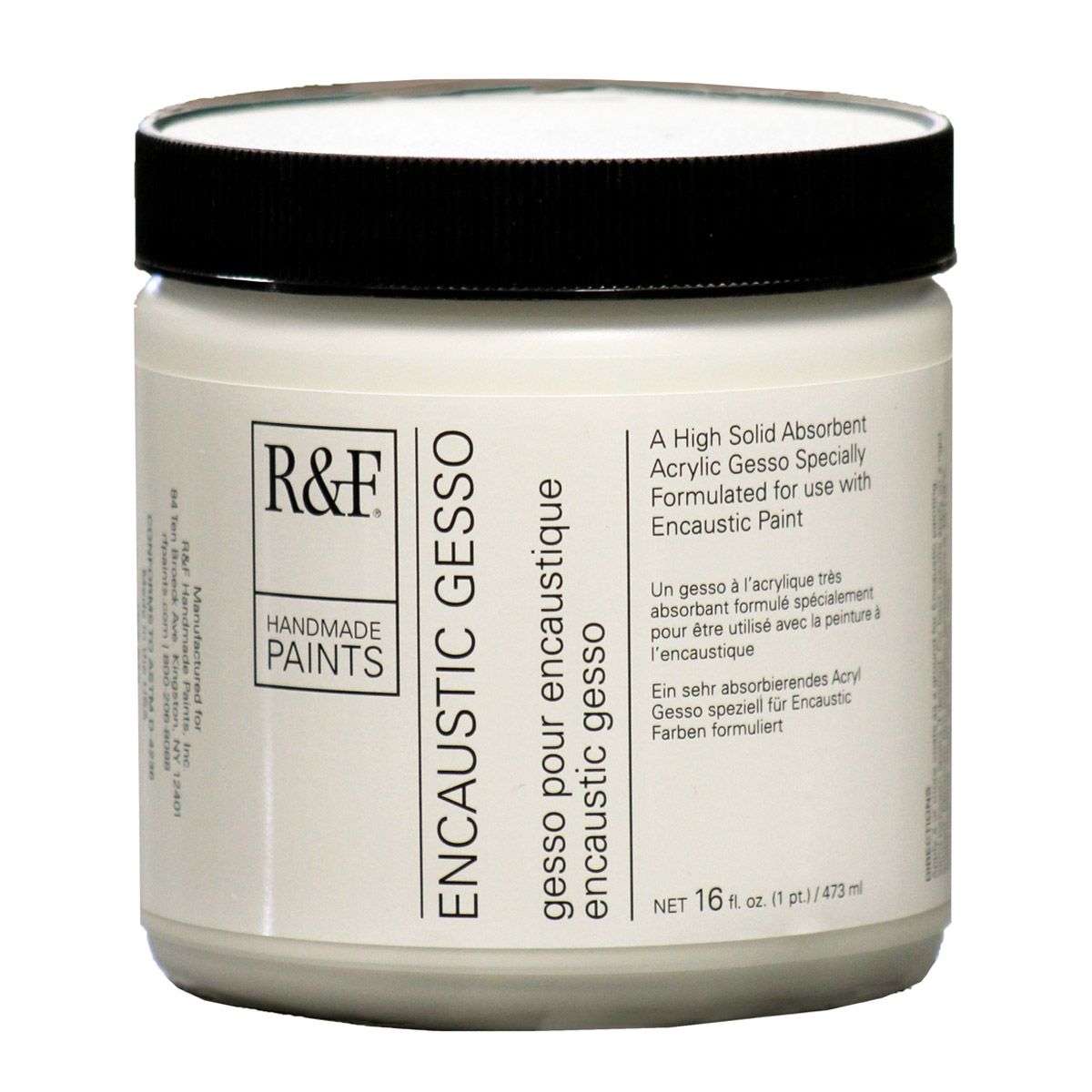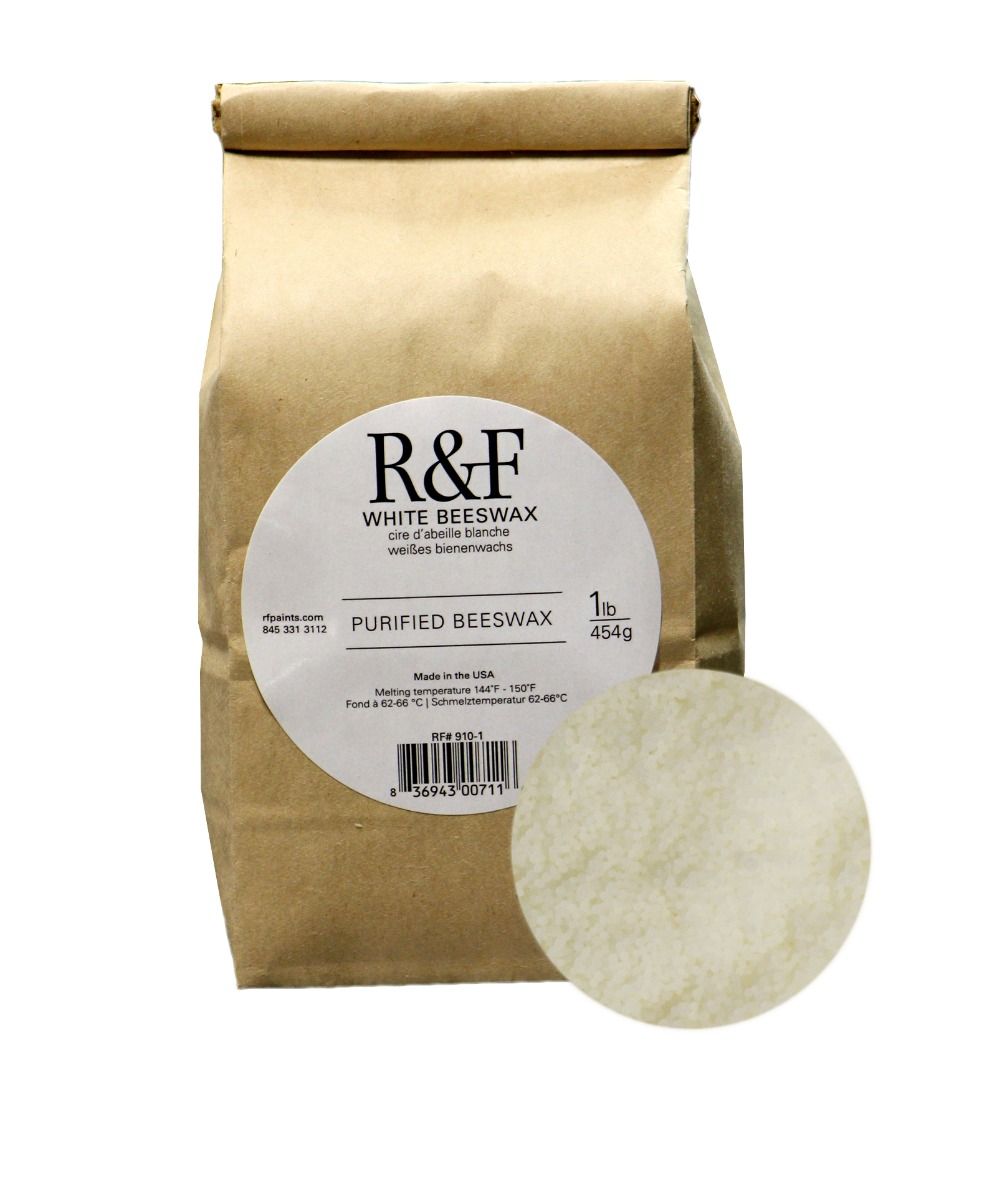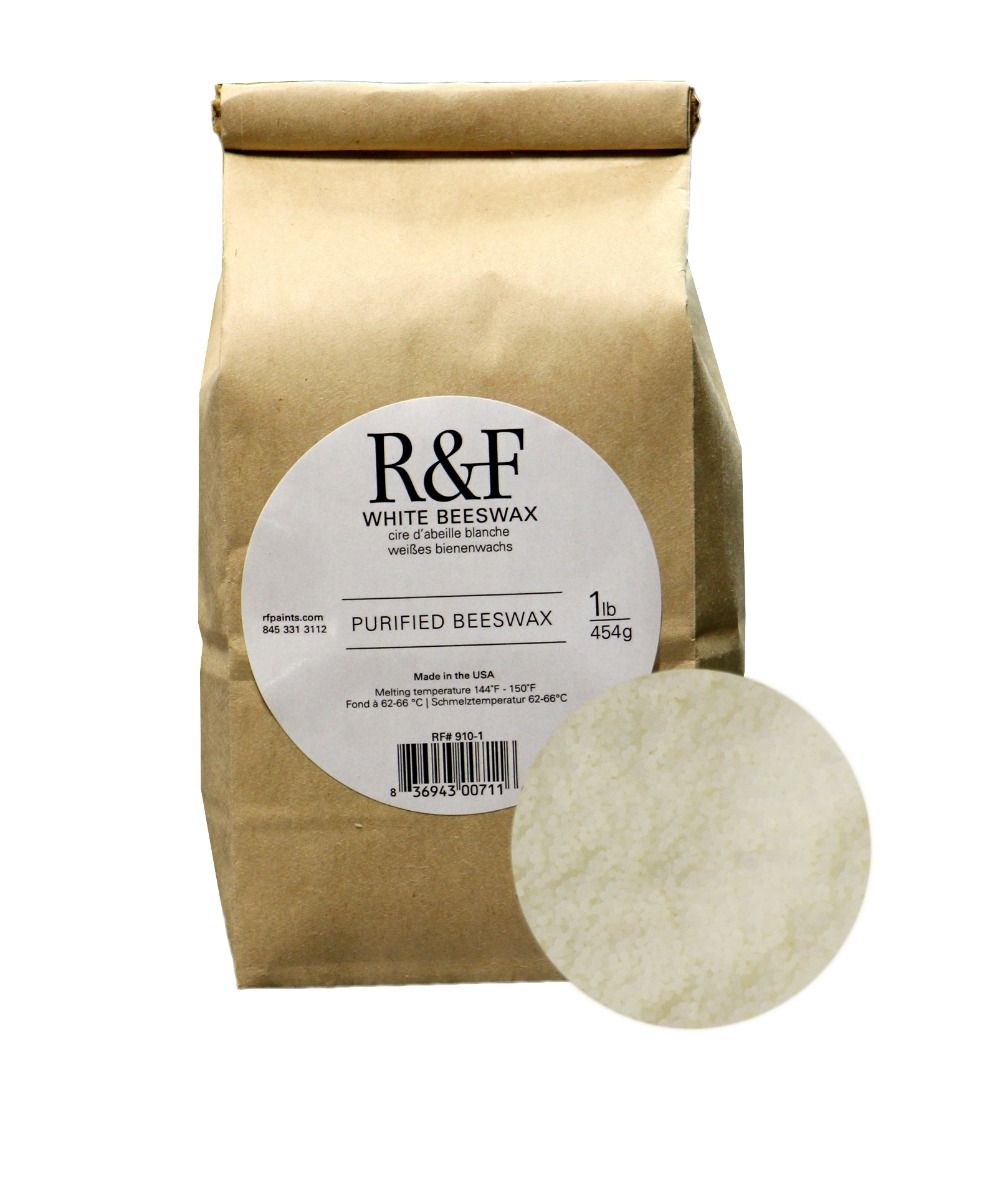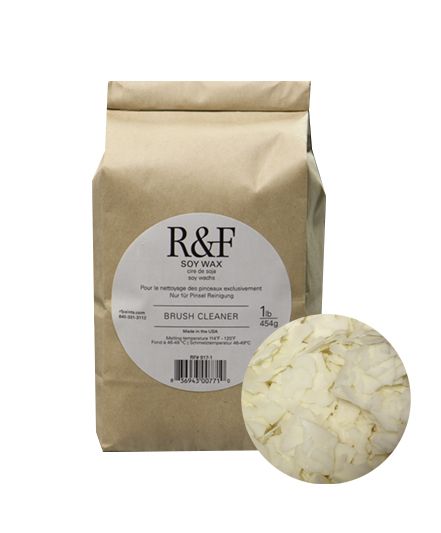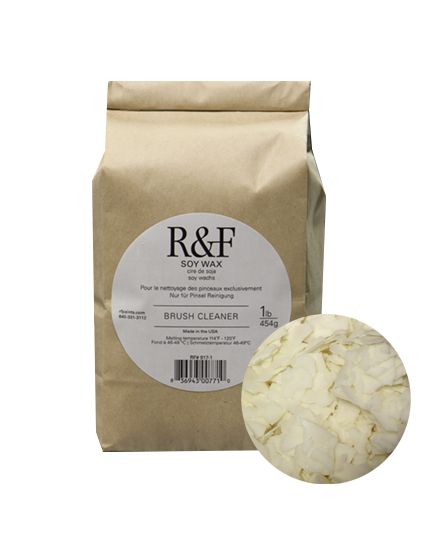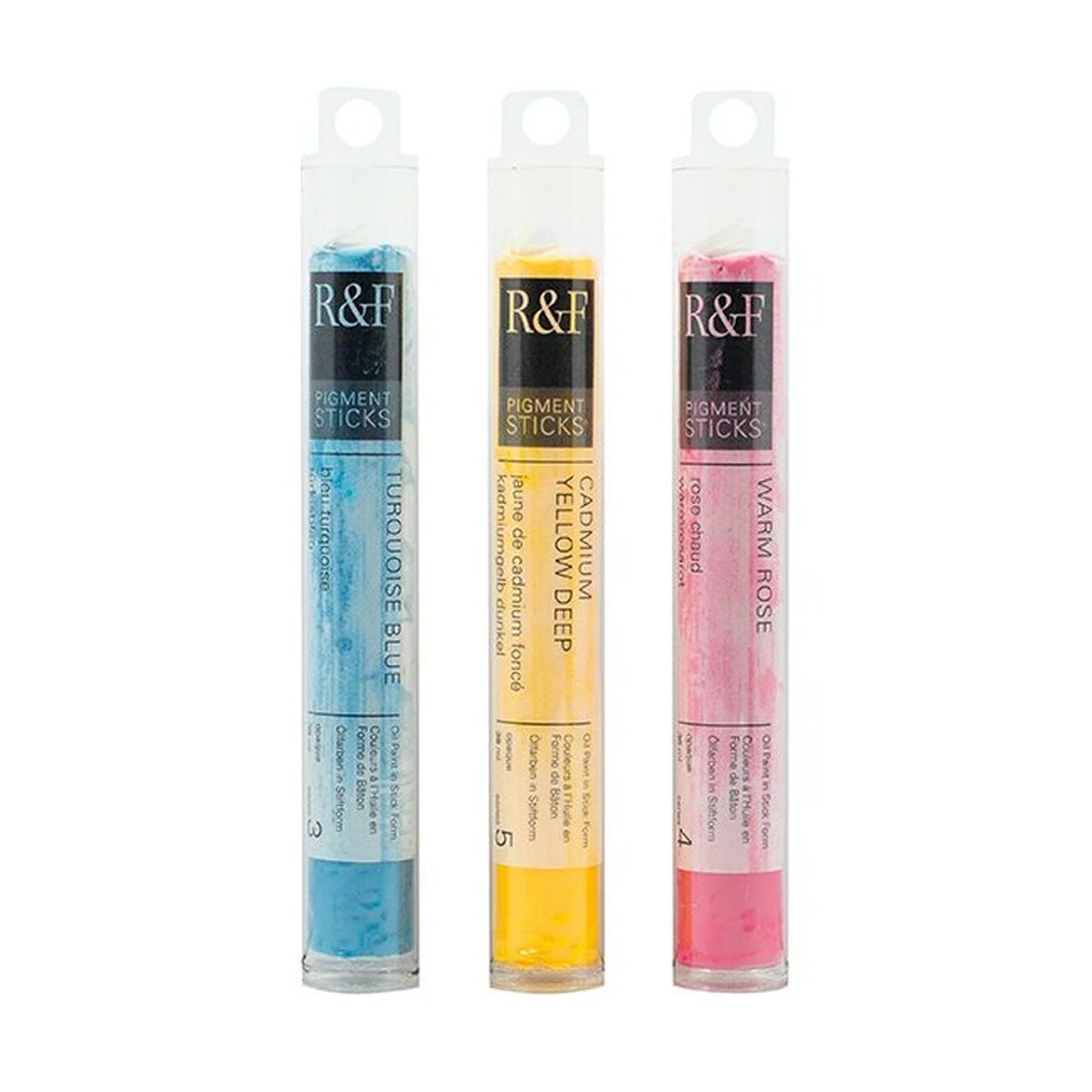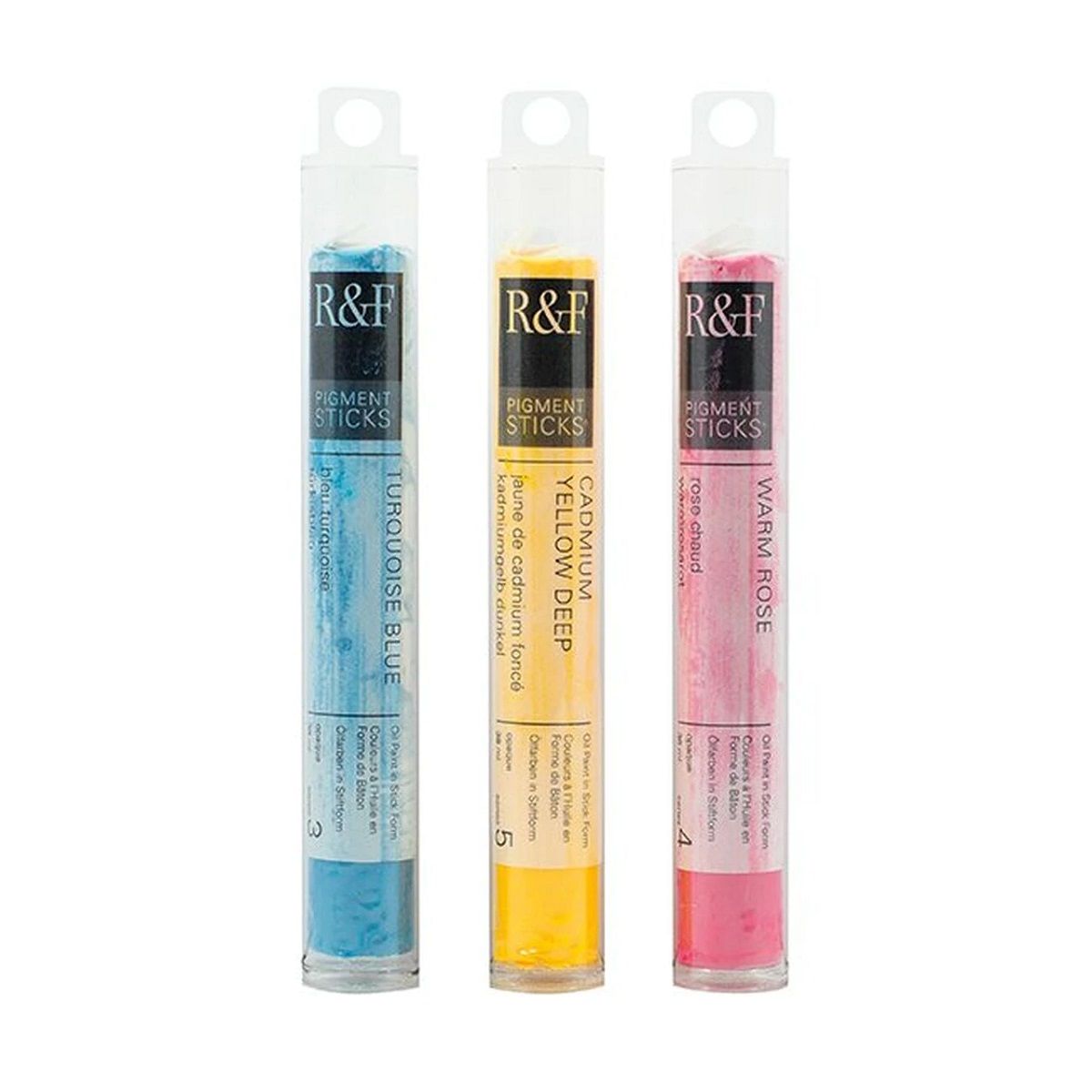R&F Encaustic Block, Indigo 40ml
R&F Encaustic Paint Block - Indigo, 40 ml
Very dark, blackish-blue top tone. Earthy greenish-blue undertone. Has an edgy feel to it. Great for line work.
- Pigment Composition: PBr7-Burnt Sienna; PB29-Ultramarine [Blue]; PB15:3-Phthalo Blue
- Paint Lines: Encaustic, Pigment Stick
- Opacity: Semi-Transparent
- Pigment Stick Drying Rate: Fast
- Classification: Mixed
- Chemical Composition: Natural earth, Ultramarine Blue, Prussian Blue
- Safety Information: Conforms to ASTM D-4236
R&F Encaustic Paint Block - Indigo, 40 ml
Very dark, blackish-blue top tone. Earthy greenish-blue undertone. Has an edgy feel to it. Great for line work.
- Pigment Composition: PBr7-Burnt Sienna; PB29-Ultramarine [Blue]; PB15:3-Phthalo Blue
- Paint Lines: Encaustic, Pigment Stick
- Opacity: Semi-Transparent
- Pigment Stick Drying Rate: Fast
- Classification: Mixed
- Chemical Composition: Natural earth, Ultramarine Blue, Prussian Blue
- Safety Information: Conforms to ASTM D-4236
Pigment Name: PBr7-Burnt Sienna
Classification: Earth
Chemical Composition: Iron oxides
Properties
Burnt Sienna is a warm, mid-brown colour formed by burning the yellow-brown limonite clay called Raw Sienna. It ranges from semi-opaque to semi-transparent due to the combination of its opaque, red-brown mass tone and its transparent, orangey undertone. It is an excellent mixing complement for blues and greens and creates salmon or peach coloured tints when mixed with white. It can be useful for subduing bright colours and does not get chalky in dark mixtures.
Permanence
Burnt Sienna has good permanence and is considered one of the most versatile of the permanent pigments.
Toxicity
Burnt Sienna has no significant hazards.
History
Burnt Sienna has been used as a pigment since prehistoric times, but its current name came about during the Renaissance. It comes from the city of Siena, in Italy, and is short for terra di Siena, meaning earth of Siena. Sienna was famous for the mining and production of earth pigments from the Renaissance until World War II. Due to the depletion of clay deposits in Tuscany, Italian siennas now come from other areas, including Sicily and Sardinia.
Pigment Name: PB29-Ultramarine [Blue]
Classification: Inorganic
Chemical Composition: Complex silicate of sodium and aluminum with sulfur
Properties
Ultramarine is the standard warm blue, a brilliant blue pigment that has the most purple and least green in its undertone. It has a moderate to high tinting strength and a beautiful transparency. Synthetic Ultramarine is not as vivid a blue as natural Ultramarine. Ultramarine dries slowly in oil and tends to produce clean, though granular, washes in watercolour. French Ultramarine mixes well with Alizarin colours in oil and watercolour form to create a range of purples and violets. It can dull when mixed with white in acrylic form, but mixes well with other colours. The shade varies based on manufacturer. Considered a great colour for glazes, it is not suitable for frescoing.
Permanence
Ultramarine has excellent permanence, although synthetic Ultramarine is not as permanent as natural Ultramarine. It may discolor if exposed to acid because of its sulfuric content.
Toxicity
Ultramarine has no significant hazards.
History
The name for this pigment comes from the Middle Latin ultra, meaning beyond, and mare, meaning sea, because it was imported from Asia to Europe by sea. It is a prominent component of lapis lazuli and was used on Asian temples starting in the 6th century. It was one of the most expensive pigments in 16th century Europe, worth twice its weight in gold, and so was used sparingly and when commissions were larger. Ultramarine is currently imitated by a process invented in France in 1826 by Jean Baptiste Guimet, making blue affordable to artists and extending the range of colours on their palettes.
Pigment Name: PB15:3-Phthalo Blue
Classification: Organic
Chemical Composition: Beta copper phthalocyanine
Properties
Phthalo Blue PB15:3 is a structural variant of Phthalo Blue PB15 that produces more greenish tones.
Permanence
Phthalo Blues are completely lightfast and stable and are permanent for all paint uses. They are currently used in inks, coatings, and many plastics due to their stability and are considered a standard pigment in printing ink and the packaging industry.
Toxicity
Phthalo Blues have no significant hazards, although those made before 1982 contained some PCBs (polychlorinated biphenyls).
History
Developed by chemists using the trade name Monastral Blue, the organic blue dyestuff now known as Phthalo Blue was presented as a pigment in November 1935 in London. Its discovery was accidental. The dark colour was observed in a kettle where a dye was being made from a British dyestuff plant. The demand for such a pigment came from commercial printers who wanted a cyan to replace Prussian Blue.
| Brand | R&F Encaustic Handmade Paints |
|---|---|
| Country of Manufacture | United States |
| Type of Store Credit value | Select |














